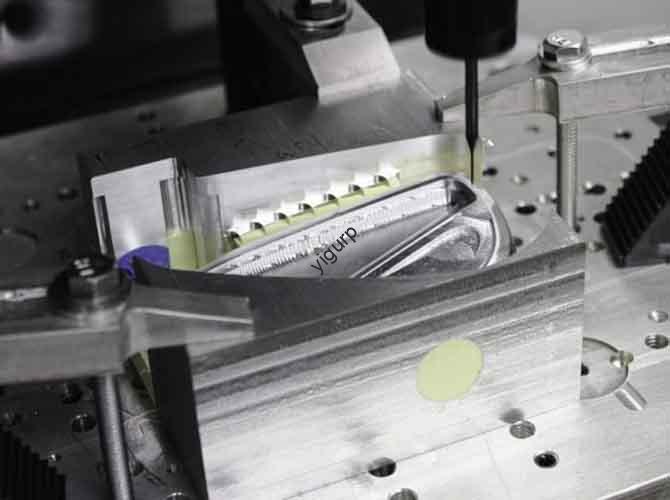Mecanizado CNC has become the backbone of precision manufacturing, but how do you consistently hit those tight tolerance targets? Whether you’re producing medical parts or aerospace components, CNC machining accuracy directly impacts product performance and customer trust. This article breaks down the critical factors affecting accuracy, soluciones prácticas, and real-world benchmarks to help you optimize your process.
1. Core Factors Affecting CNC Machining Accuracy: A Comparative Table
Not all accuracy issues stem from the same source. Below is a side-by-side look at the top 6 factors, their impact, and quick fixes:
| Factor | Impact on Accuracy | Quick Optimization Tips |
|---|---|---|
| Machine Quality | Alto (30-40% of errors) | Choose machines with rigid cast iron frames |
| Tool Quality | Alto (25-30% of errors) | Use herramientas de carburo; replace after 50 horas de uso |
| Control de temperatura | Medio (15-20% of errors) | Maintain shop temp at 20-22°C (± 1 ° C) |
| Programming Accuracy | Medio (10-15% of errors) | Test tool paths with simulation software |
| Velocidad de mecanizado | Bajo a medio (5-10% of errors) | Reducir la velocidad por 10% for tolerances <0.01milímetros |
| Fixture Accuracy | Medio (15-20% of errors) | Use hydraulic clamps for stable clamping force |
2. Let’s Dive Deeper: Critical Factors Explained
Machine Quality: The Foundation of Precision
A CNC machine is only as accurate as its components. High-precision machines use:
- Rigid structures: Cast iron frames reduce vibration during cutting.
- High-quality ball screws: Minimize backlash (ideal for tolerances down to 0.001mm).
- Precision linear guides: Asegurar suave, consistent movement of the spindle.
Por ejemplo, a mid-range CNC mill might achieve 0.01mm accuracy, while a high-end model (like those used in semiconductor manufacturing) can hit 0.001mm—10 times more precise.
Tool Quality: Don’t Overlook the Cutting Edge
Imagine using a dull pencil to draw a straight line—tools work the same way.
- Precisión geométrica: A tool with uneven edges will leave rough surfaces and miss tolerance.
- Wear state: Después 8 hours of continuous cutting, a high-speed steel tool can lose up to 0.005mm of its edge—enough to ruin a part requiring 0.003mm accuracy.
Solución: Usarcoated carbide tools (P.EJ., TiAlN coating) to extend life and check tool wear with a micrometer every 2 horas.
Control de temperatura: The Hidden Accuracy Killer
Why do bakeries keep ovens at a fixed temperature? Because materials expand and contract with heat—same for CNC machining.
- A 5°C temperature rise can cause a 1-meter aluminum workpiece to expand by 0.06mm (more than the typical 0.01mm tolerance!).
- Even spindle heat matters: A hot spindle can shift by 0.002mm mid-machining.
Arreglar: Install HVAC systems with precise controls and usecoolant systems to keep tools and workpieces at a steady temp.
3. Real-World Accuracy Benchmarks: What’s Achievable?
How do these factors translate to actual results? Here’s a breakdown of typical accuracy levels for different industries:
| Industria | Required Accuracy | Common CNC Setup |
|---|---|---|
| Automotor | 0.05-0.1milímetros | Mid-range CNC lathe + Herramientas HSS |
| Dispositivos médicos | 0.005-0.01milímetros | High-precision mill + Herramientas de carburo + temp control |
| Aeroespacial | 0.001-0.005milímetros | Ultra-precision machine + herramientas de ceramica + vibration dampening |
4. Yigu Technology’s Perspective on CNC Machining Accuracy
En la tecnología yigu, creemosaccuracy is not just a specification—it’s a process. Our CNC solutions combine rigid machine designs with intelligent temperature monitoring to reduce errors by up to 30%. We often advise clients to start with a “accuracy audit”: test their current process against the factors in this article, then prioritize fixes (P.EJ., upgrading tools before buying a new machine). Para la mayoría de los fabricantes, pequeño, targeted changes (like better fixture clamping) yield faster ROI than full overhauls.
Preguntas frecuentes
- q: Can I achieve 0.001mm accuracy with a standard CNC machine?A: No. Standard machines typically top out at 0.01mm. Ultra-precision machines (with specialized components) are needed for 0.001mm tolerances.
- q: How often should I calibrate my CNC machine to maintain accuracy?A: Para la producción de alto volumen, calibrate every 3 meses. Para bajo volumen, precision work, calibrate monthly.
- q: Does faster machining always mean lower accuracy?A: No siempre. Some modern machines use “high-speed precision” technology (P.EJ., adaptive feed rates) to maintain accuracy at faster speeds. Test with your specific part and material first.
